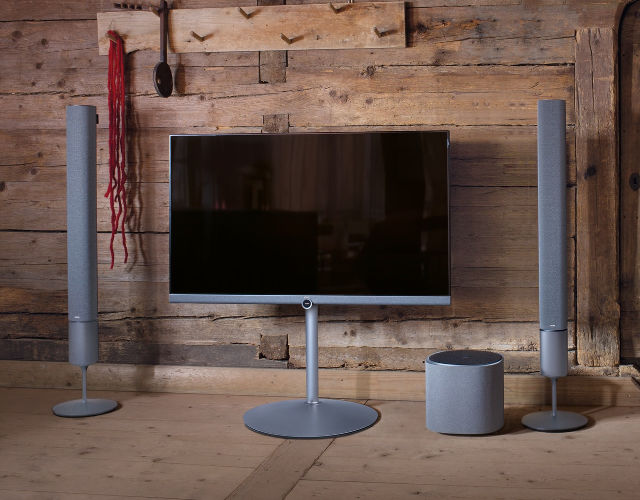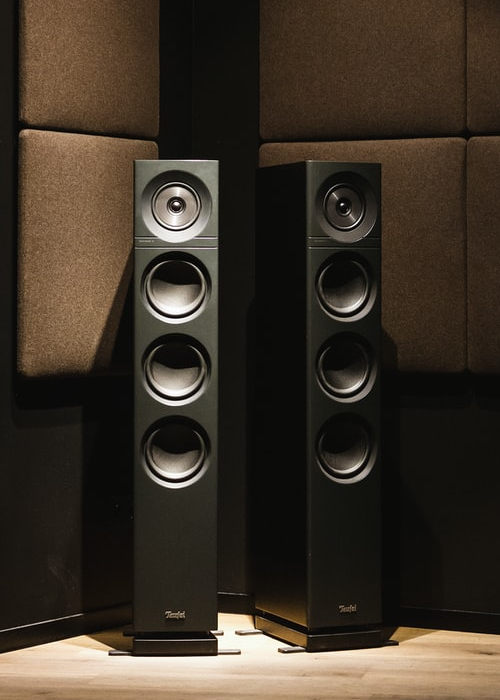This post is for listeners who are planning to set up a stereo sound system or already own one and are trying to find out the difference between 2.0 and 2.1 speaker setups. We will be sharing with you information about both stereo system setups and hopefully, this will help you to better decide which setup to go for.
We won’t be talking much about whether 2.0 or 2.1 speaker setups is more affordable to go for as either one can cost more than the other. We will suggest you work out a budget first and this will be the amount you are willing to spend on speakers. If you are going for passive speakers, please do include the cost of getting an amplifier as you need it to drive them.
Table of Contents
What is a 2.0 speaker channel setup?
A 2.0 speaker channel setup consists of a pair of loudspeakers and may include a stereo amplifier to drive them, this will depend on the type of speakers you are getting. The pair of loudspeakers in the 2.0 setup can be satellite, bookshelf, or floor-standing speakers, These speakers can be either active or passive. If you are going for active speakers then you wouldn’t need an additional amplifier since they come with their own built-in amp.

If you have very limited space in your listening room or on your desktop, you can choose to go with satellite speakers or compact bookshelf speakers. Bookshelf speakers of a certain size and quality can be used in a mid-sized listening room. Floor-standing speakers are typically used inside a mid or large-sized listening room. Floor-standers have higher bass output and could deliver deeper low-ends as well.
What is a 2.1 speaker channel setup?
A 2.1 speaker channel setup is almost the same as a 2.0 setup, just that it has a subwoofer being integrated into the system. We highly recommend going with powered subwoofers as they come with their own built-in amplifiers. 2.1 channel setup will require your integrated amp to have a dedicated subwoofer output. If you are using active speakers, please make sure they have a sub output as well.

Differences between 2.0 and 2.1 speakers
A 2.1 speaker setup that uses a powerful and high-performance subwoofer will tend to produce deeper and higher bass outputs than a 2.0 setup of the same price range. It is also a more affordable way to get full-range sound reproduction. Even though a 2.1 channel has higher bass outputs but the lower registers delivered by the subwoofer could be sluggish and/or overwhelm the upper registers produced by your speakers. To minimize this issue, you will need to do the subwoofer crawl method and this will help you to find the most optimal spot for your sub where it will sound the best to your ears.
A 2.0 speaker setup will have a more seamless stereo playback and a tighter bass delivery. If you really like your stereo speakers’ sonic traits and sound signatures, it is advisable not to add a subwoofer into the mix.
To get full-range sound reproductions from a 2.0 setup, you will need to spend a lot on a pair of high-end floor-standing speakers which is capable of digging deep into the bass extension. Not to mention you will also need a high-quality and powerful stereo amplifier to drive such loudspeakers. There are floor-standing speakers that have their own in-built subwoofers but it is not easy to find optimal speaker positions for them and they need a lot of space away from the walls. This method won’t work if your listening room is small or medium in size as you won’t have enough space to accommodate a large pair of floor-standing speakers.

You don’t really need a 2.1 setup if you don’t listen to bass-heavy music or watch movies. For those who are using small satellite speakers or compact bookshelf speakers, integrating a subwoofer might improve your listening experience as the added weight and deeper bass will provide more depth. The sub can also help to add more presence and expand the soundstage. Listeners who are planning to set up a desktop sound system to connect to their PC and will be using them for playing music, movies, and games would benefit from a 2.1 channel setup.
To Conclude
We hope our post has helped you to learn more about the differences between 2.0 and 2.1 speaker setups, enabling you to better decide which setup is more suited for your preferences and usage. If you already own a 2.0 stereo system, you might want to test the sonic prowess of a 2.1 by auditioning an active subwoofer inside your own listening room. For listeners who have a small listening room, you might want to read up about getting a subwoofer for small rooms.
Listeners who want to explore more potential speaker setups should check out our post about the differences between 2.1 and 4.1 speakers. This will be interesting for those who want to set up or expand to a surround sound system without using a center channel speaker.



